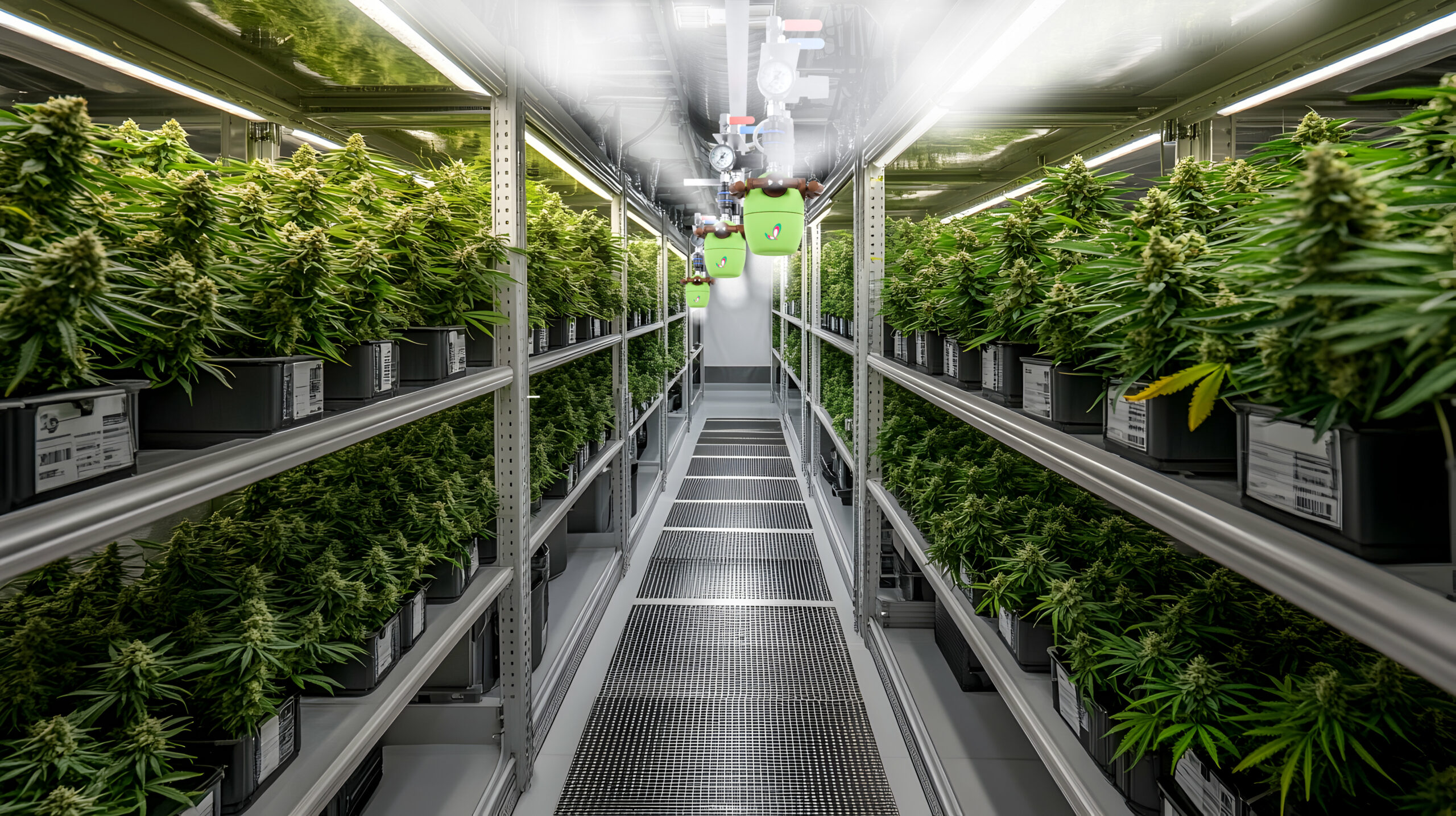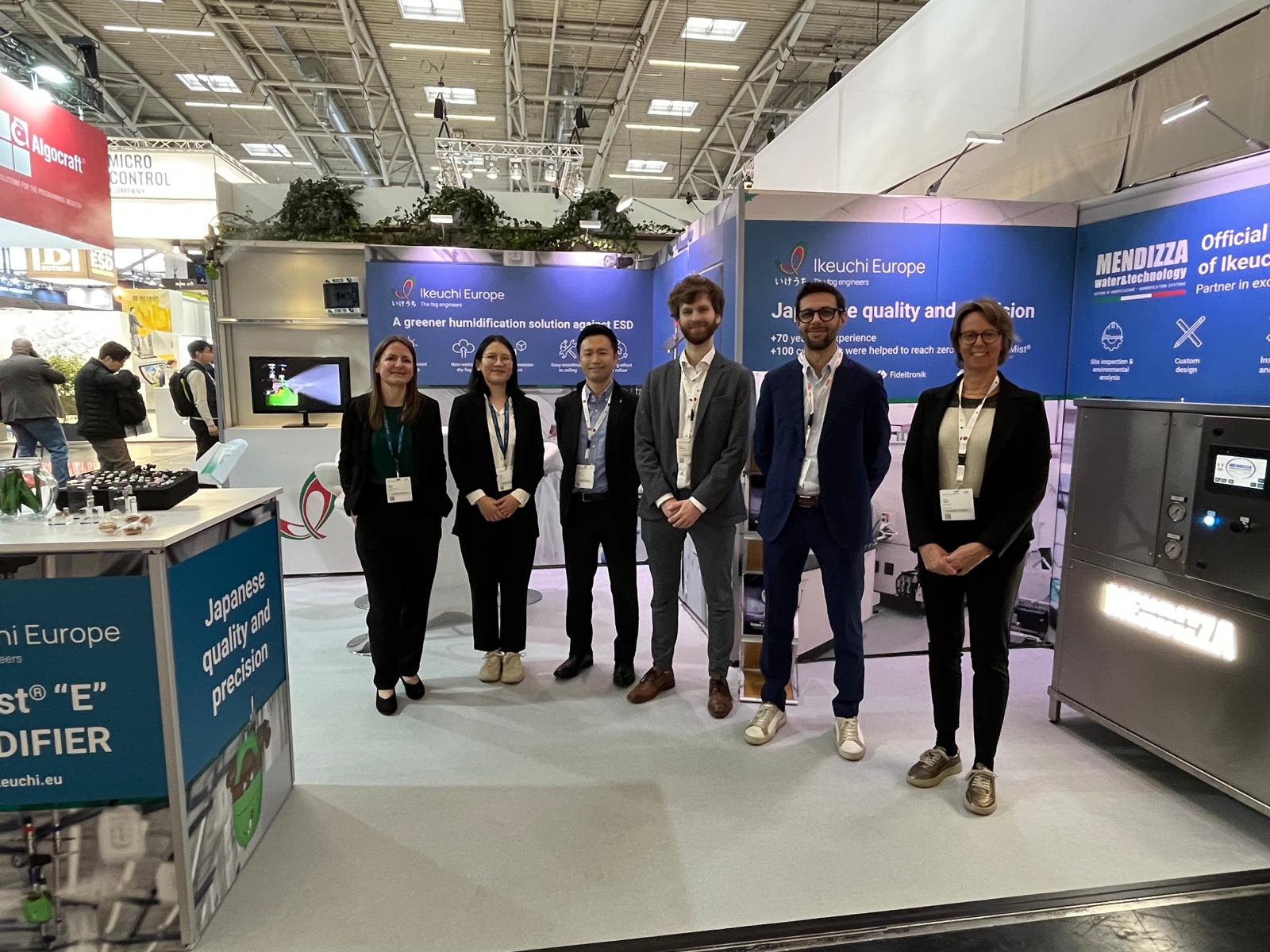Droplet size: how do we measure the diameter of a water droplet?
A water droplet isn’t just a water droplet. They differ greatly in size and characteristics and thereby also purposes. A droplet size is measured in microns (μm) A micron is 1/1000 of a millimeter or about 1/25,000 of an inch. 50 microns is about the size of a human hair, while 2 microns is about the size of a bacteria. As you can imagine, there is a huge difference between the feeling of a 50 micron droplet and a 2 micron droplet.
Examples of droplet size in different industries
It differs greatly from application to application which droplet size is recommended. For a cleaning or cooling application, a larger droplet size between 200 – 1,200 μm would be advantageous as you need a lot of water pressure.
However, for cooling of a barn with cows, for instance, a much smaller droplet size between 35 – 60 μm would be recommended. Otherwise the cows would get soaked instead of just cooled.
If we go one step further, to an SMT, electronics, or textile production, it would be considered a risk to add water at all. In this case, a droplet size around 7.5μm would be recommended. These droplets are so small that they bounce back before reaching any surface.
Droplet classification
In the illustration, you can see the classification of droplet sizes:
<10 μm : Ultra-fine atomization / dry fog
<100 μm : Fine atomization / fine fog
<300μm : Semi-fine atomization / fine drizzle
<1000μm : Semi-coarse atomization / Light rain
>1000μm : Coarse atomization / rain storms
Spray droplet measuring methods
There are three common methods to measure droplet diameter.
- Immersion sampling method
- Laser analyzer: Fraunhofer diffraction method
- Laser Doppler method
The immersion sampling method and the laser analyzer are used as industrial methods of measuring spray droplet sizes.
Immersion sampling method
Droplets are collected on a glass plate coated with silicone oil and they are immediately photographed at high magnification for subsequent scanning.
In this method, the collected droplets quickly settle in the silicone oil and do not evaporate even underneath the strong light while being photographed. Stuck in the silicone oil, they are measured as perfect spheres.
However, ultra-fine droplets, too small to break the surface tension of the oil and stick, will evaporate. Thus, the droplet sizes of the fine and ultra-fine fog determined by the immersion sampling method are larger than the actual values.
Laser analyzer: Fraunhofer diffraction method
The diffraction pattern In this method, the principle of diffraction by laser beam is used. When the droplets get in the way of the laser beam, they scatter the direction of the laser rays, creating a diffraction pattern (Fraunhofer diffraction)
The diffraction pattern depends on the size of the droplets and their distribution.
This method can simultaneously measure all the droplets that interfere with the laser beam.
But if the concentration of droplets in the spray is too high, a phenomenon called multiple dispersion can occur. Multiple dispersion means that a ray diffracted by a drop can be diffracted again from another drop. This alters the measurement by making the measurement smaller than the actual droplet size.
Laser analyzer: Laser Doppler method
This method is based on the creation of a beam where two laser beams interfere.
When a droplet passes through this beam, two or more sensors, located at a certain distance, detect the phase difference of the scattered light by determining the size of the droplet.
The advantage of this method is that it does not affect the spray concentration range of the spray. This is because it measures the size of the droplets one by one. But also because it measures the speed of the droplets at the same time. However, measurement is made only at a single point of the spray.
Comparison between the 3 methods
Depending on the measuring method used, the size of the same water droplet will differ. Assuming the mean droplet diameter measured by the immersion sampling method is equal to 1 (as a relative coefficient number), the value will be different when measured with the Fraunhofer diffraction method and the Laser Doppler method. We use the immersion sampling method in our hydraulic catalog to give an indication about the spray droplet diameters of each nozzle series. And for our pneumatic catalog, we always specify which method we used to measure the diameter.
Seek our advise on droplet sizes:
Choose the correct spray droplet diameter for the application you are looking for and ask our project engineer to help you choose the optimum nozzle.
Ready to help
We offer more than 42.000 types of spray nozzles. Ask our advise about anything related to spraying.
- Hydraulic spray nozzles
- Pneumatic spray nozzles
- Air nozzles
- Tank cleaners
- Humidity control
Related articles
Stay updated: Ikeuchi news & insights
"*" indicates required fields
Get expert advice:
contact us today
Would you like to know what Ikeuchi can do for your organization? We’re happy to discuss your needs and show how we can solve your challenges. You’ll receive a response from us within 24 hours!
"*" indicates required fields
Call us: +31 (0) 20 820 2175
- Global presence and experience
- The number 1 nozzle manufacturer in Japan
- Japanese Precision Technology
“High quality nozzles. Friendly and helpful customer service”
“With Ikeuchi spray nozzles we are able to save costs as we don’t need to replace them so often as before.”
“When it is about nozzle technology, IKEUCHI are the experts. We always highly appreciated their knowhow and their extremely wide range of nozzles, not to mention their unrivalled AKIMist humidifier”
“When it is about nozzle technology, IKEUCHI are the experts. ”




